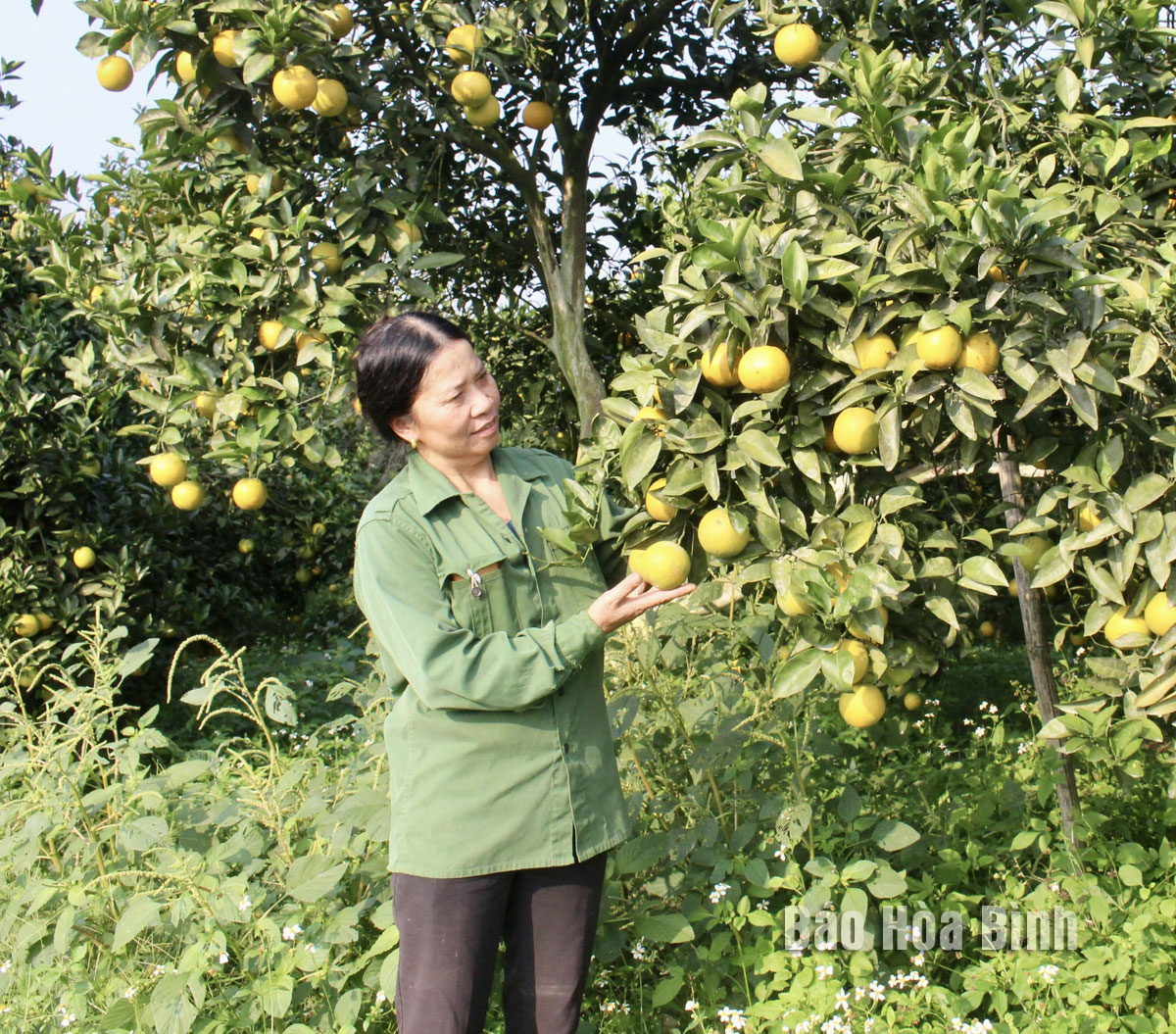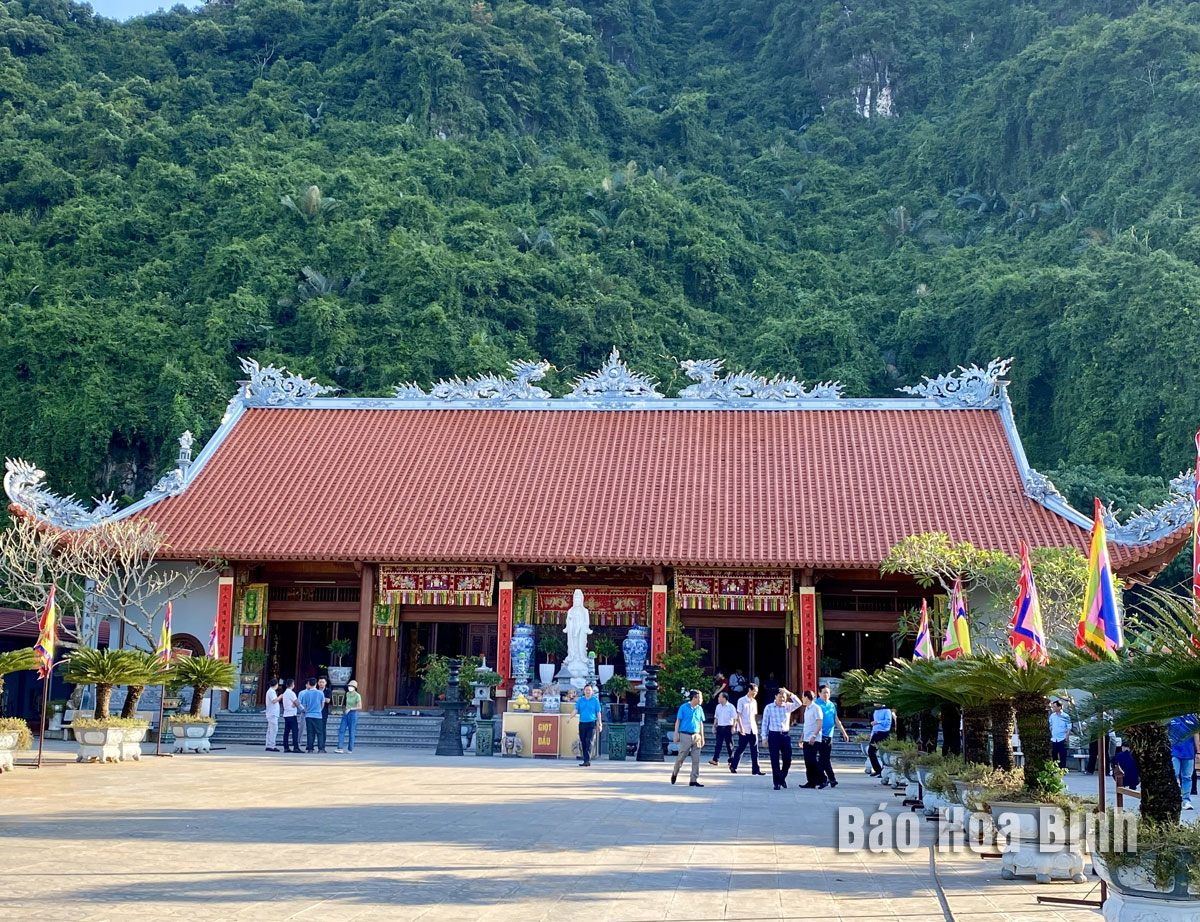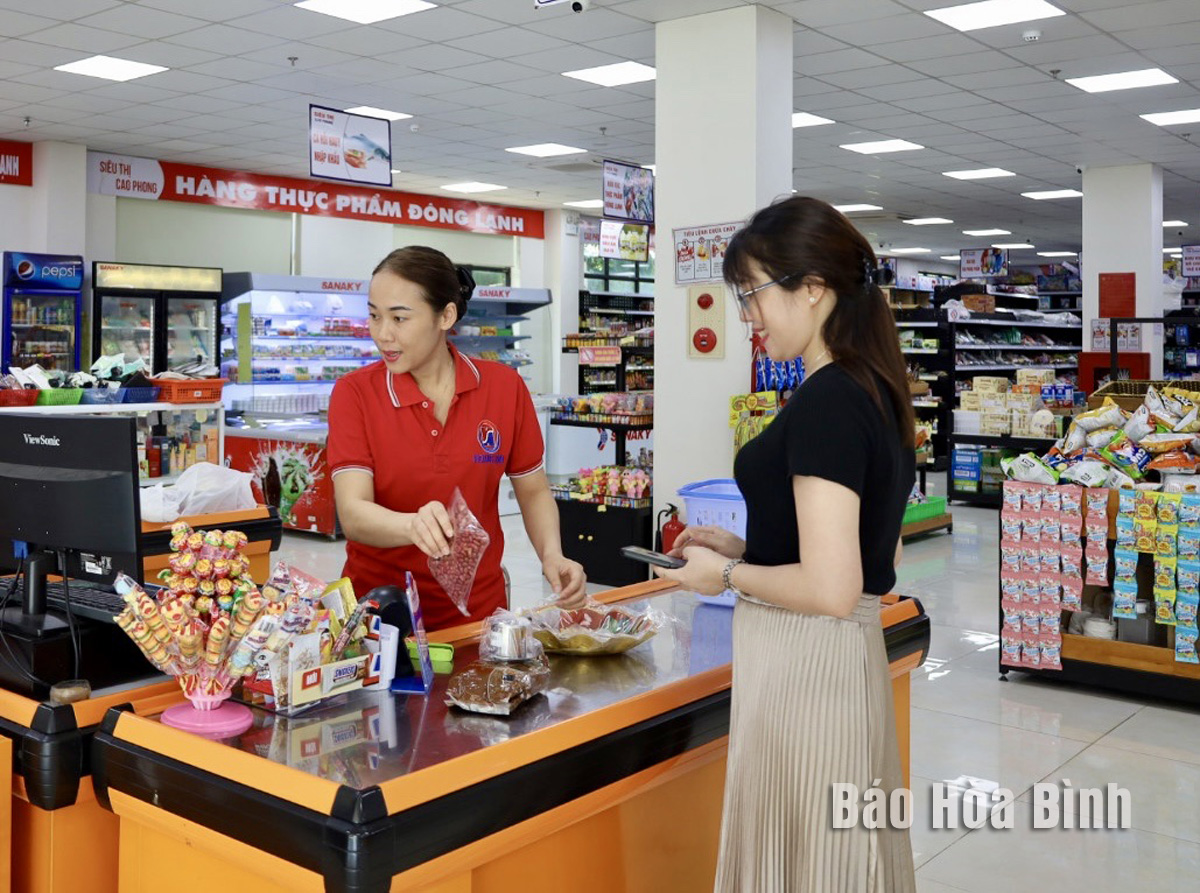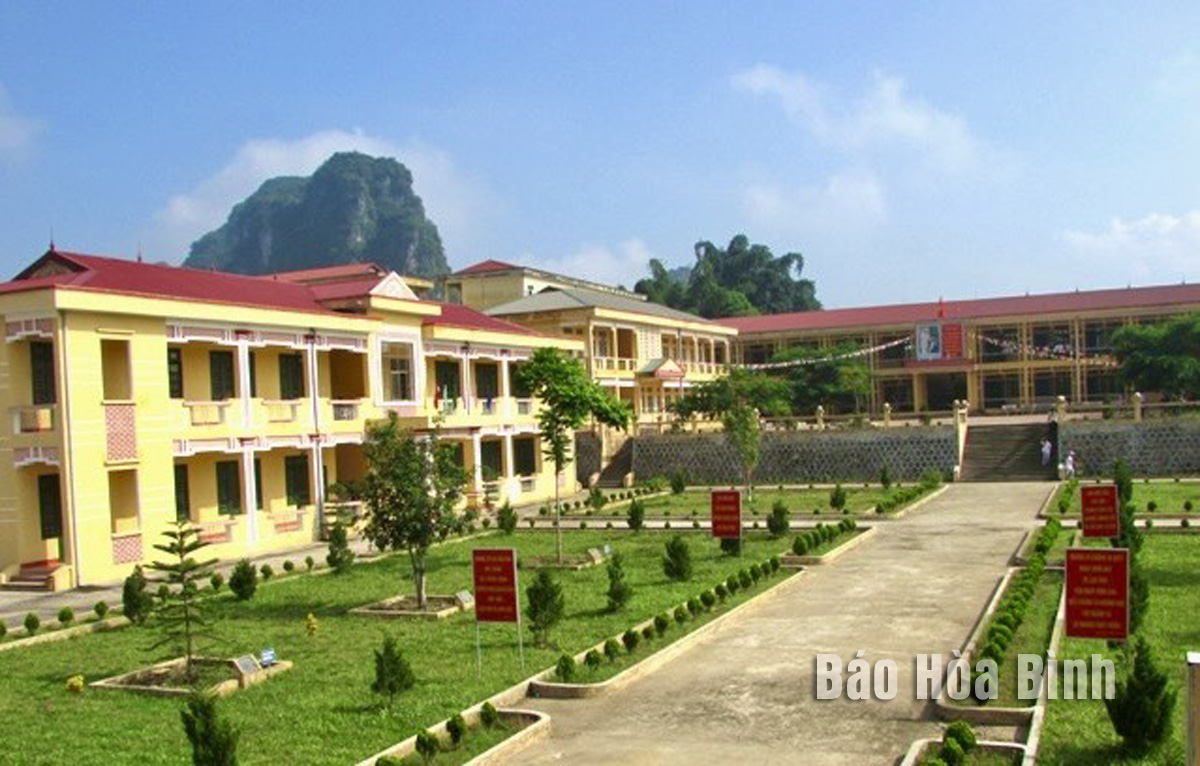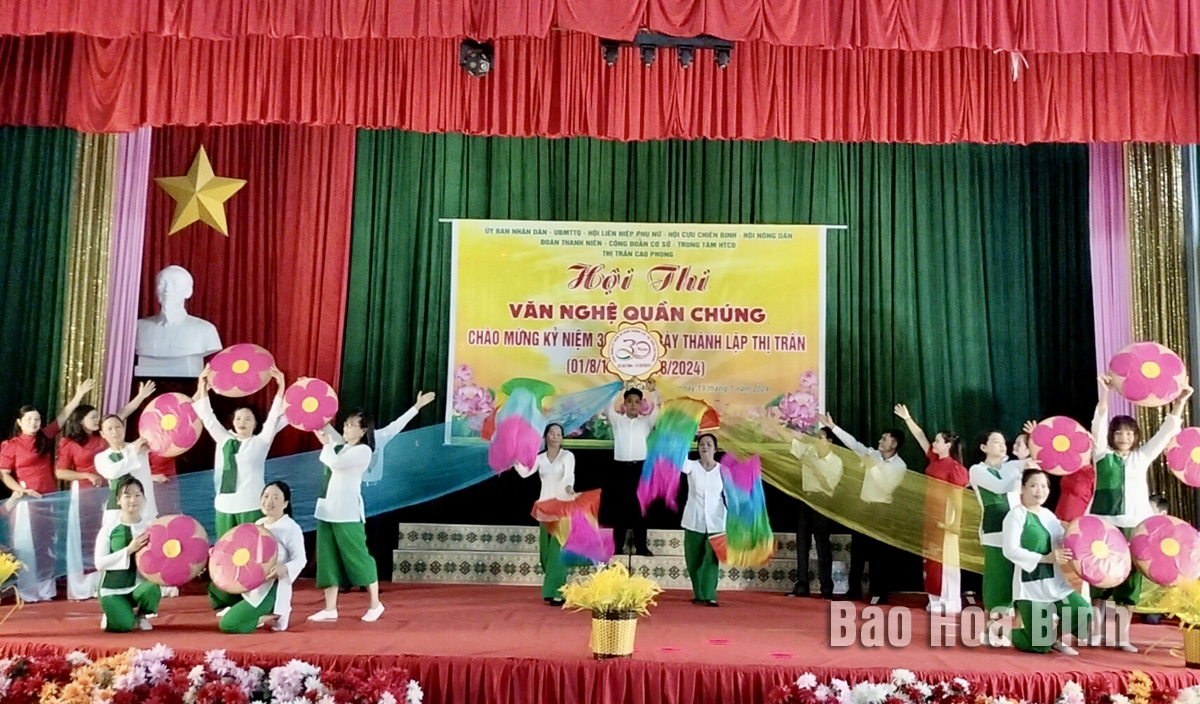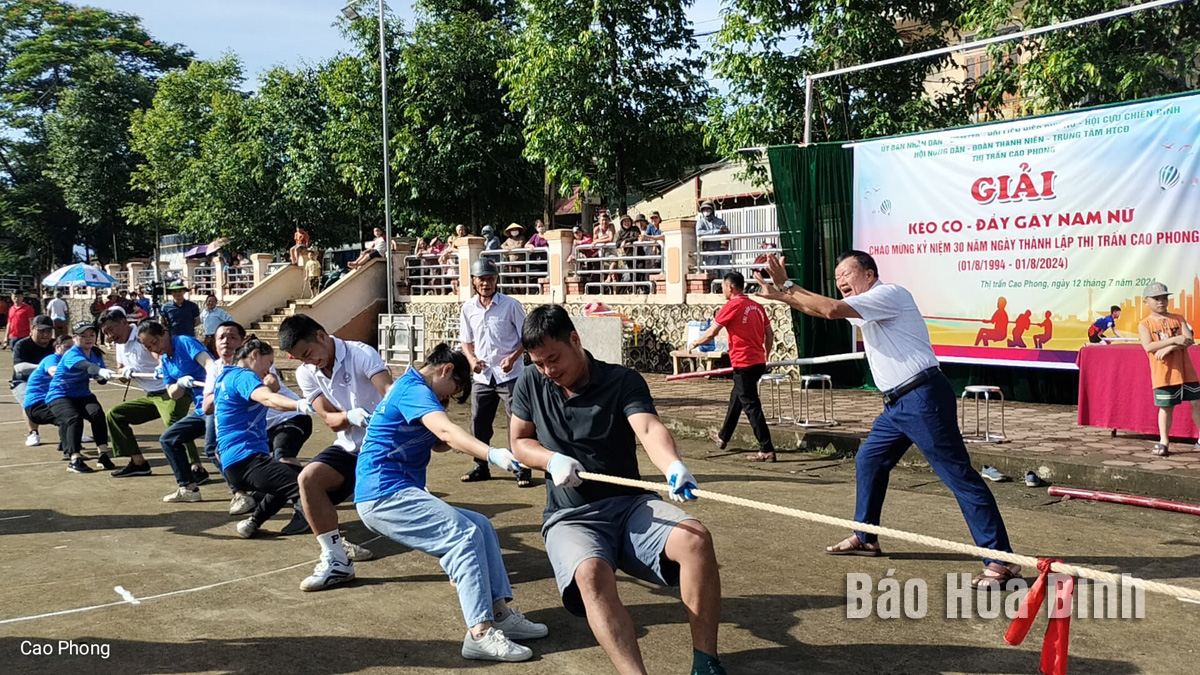
After 30 years since its establishment (August 1st, 1994 - August 1st, 2024), Cao Phong town has made significant progress, from a mountainous agricultural town facing many difficulties to becoming the political, economic and social center of the district, aiming to build a civilized, modern urban area, which is rich in the cultural identity.
The nature has endowed Cao Phong with a climate and soil, which is suitable for growing oranges. Cao Phong town has become a key citrus fruit region in Hoa Binh province. Cao Phong oranges have been certified with a geographical indication. The development of high-value agricultural production has significantly improved the people's lives.
Bong Lai Temple (Thuong Bong Lai Temple), located within the national scenic spot complex of Đau Rong mountain caves in zone 3, Cao Phong town, has been attracting both lthe ocals and visitors from afar.
The socio-economic life of Cao Phong town has seen many positive changes. Cao Phong supermarket, which started operating in 2021, meets the needs of the town's residents and those of Cao Phong district.
Cao Phong Secondary School is the first secondary school in Hoa Binh province to meet the national standards at level 2. Currently, three schools are meeting the national standards at level 2 and one school meeting the national standards at level 1 in the town. The town leads the district in the educational work.
The movement to build a cultural life in Cao Phong town has been widely implemented, having a far-reaching impact in the community. On July 19th, 2024, a public arts festival was held to celebrate the 30th anniversary of the establishment of Cao Phong town, attracting a large number of officials and residents.
The sports movement in Cao Phong town has been promoted. The tug-of-war and stick-pushing competition took place to celebrate the 30th anniversary of the town's establishment...
Nestled halfway up the mountains in Cao Son commune, Da Bac district, Sung village appears like a picture preserved intact through generations. With a history of over 300 years, the village is home to nearly 100 households of Dao Tien ethnic group – the people who still maintain their distinctive characteristics in housing architecture, clothing, customs and traditional crafts. The village is drawing increasing interest and exploration from both domestic and international tourists, as every visit becomes a cultural journey to experience the authenticity, friendliness, and hospitality of this highland region.
This Spring, more than 1,000 phoenix trees in Thang Hamlet, Thach Yen Commune (Cao Phong) have bloomed brilliantly, quickly spreading on social media. The picturesque beauty of the flower garden has attracted the participation of many people to admire and take photos.
This belief is both a guiding principle and a lifelong ambition for Sa Van Cam, a member of the Tay ethnic group in Da Bac district and a passionate advocate for the Tay culture. The native has devoted years to the revival, preservation, and teaching of the ancient Tay script.
Located just 25 km from Hoa Binh city and approximately 100km from Hanoi, with a journey of around 1 hour 45 minutes, Ngoi Hoa ecotourism site (PriorBay Resort) in Suoi Hoa commune, Tan Lac district, is a stunning peninsula retreat, and a standout destination within the Hoa Binh Reservoir tourism area. Officially opening in February this year, the resort captivates visitors with its distinctive vacation products and a range of exciting adventure experiences.
Over 1,500 women paraded in traditional ao dai (long dress) at Hoa Binh Square on March 5 to mark Ao Dai Week 2025 launched by the Vietnam Women's Union. Organised by the provincial Women’s Union in collaboration with the city’s chapter, the annual event features lively folk dance performances and a colorful parade that celebrated the beauty of Vietnam’s traditional dress and its rich cultural heritage.
With skillful and meticulous craftsmanship, H’Mong women in Pa Co Commune, Mai Chau district carefully carry out dozens of manual steps to weave skirts, bags, scarves… with vibrant colors. They continue to preserve the traditional brocade weaving, transforming these products into tourism goods while also promoting the H’Mong people's unique cultural beauty.



